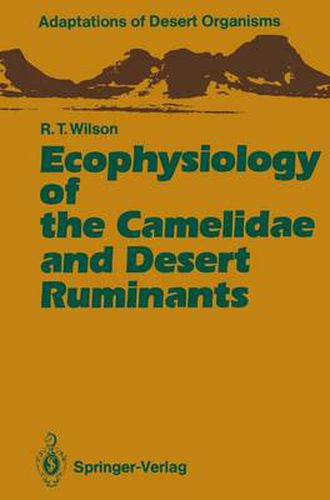Readings Newsletter
Become a Readings Member to make your shopping experience even easier.
Sign in or sign up for free!
You’re not far away from qualifying for FREE standard shipping within Australia
You’ve qualified for FREE standard shipping within Australia
The cart is loading…






This title is printed to order. This book may have been self-published. If so, we cannot guarantee the quality of the content. In the main most books will have gone through the editing process however some may not. We therefore suggest that you be aware of this before ordering this book. If in doubt check either the author or publisher’s details as we are unable to accept any returns unless they are faulty. Please contact us if you have any questions.
I have spent less time in the arid zone in the last few years than I did during the 1960’s, 1970’s and early 1980’s. This results from a progression through age and a career structure which gradually shifted the emphasis of my work from being essentially field-oriented to essentially office-hound. When, therefore, I was asked by John Cloudsley-Thompson to undertake the writing of this hook I hesitated for two reasons. One reason was that, although I now had access to good library facilities and kept up with the literature on the arid zones and their fauna, I was not sure that a sedentary and pleasant life in a temperate highland island in tropieal Africa would provide a mental attitude suitable to writing a hook which related to areas where life is usually nomadie and often extremely disagreeable. The other reason was that I was uncertain whether I could devote the time necessary to researehing and writing the hook on top of my professional (which now specifical ly excluded research in the arid zones and on camels) and social (new-found and time-consuming) commitments. In the event I accepted and the fates were kind to me. By some peculiar combination of circumstances I was given the opportunity to spend a considerable part of the first half of 1988 in some of the driest areas of the globe. I had already visited all of the locations used for the construction of Fig. 2.
$9.00 standard shipping within Australia
FREE standard shipping within Australia for orders over $100.00
Express & International shipping calculated at checkout
This title is printed to order. This book may have been self-published. If so, we cannot guarantee the quality of the content. In the main most books will have gone through the editing process however some may not. We therefore suggest that you be aware of this before ordering this book. If in doubt check either the author or publisher’s details as we are unable to accept any returns unless they are faulty. Please contact us if you have any questions.
I have spent less time in the arid zone in the last few years than I did during the 1960’s, 1970’s and early 1980’s. This results from a progression through age and a career structure which gradually shifted the emphasis of my work from being essentially field-oriented to essentially office-hound. When, therefore, I was asked by John Cloudsley-Thompson to undertake the writing of this hook I hesitated for two reasons. One reason was that, although I now had access to good library facilities and kept up with the literature on the arid zones and their fauna, I was not sure that a sedentary and pleasant life in a temperate highland island in tropieal Africa would provide a mental attitude suitable to writing a hook which related to areas where life is usually nomadie and often extremely disagreeable. The other reason was that I was uncertain whether I could devote the time necessary to researehing and writing the hook on top of my professional (which now specifical ly excluded research in the arid zones and on camels) and social (new-found and time-consuming) commitments. In the event I accepted and the fates were kind to me. By some peculiar combination of circumstances I was given the opportunity to spend a considerable part of the first half of 1988 in some of the driest areas of the globe. I had already visited all of the locations used for the construction of Fig. 2.